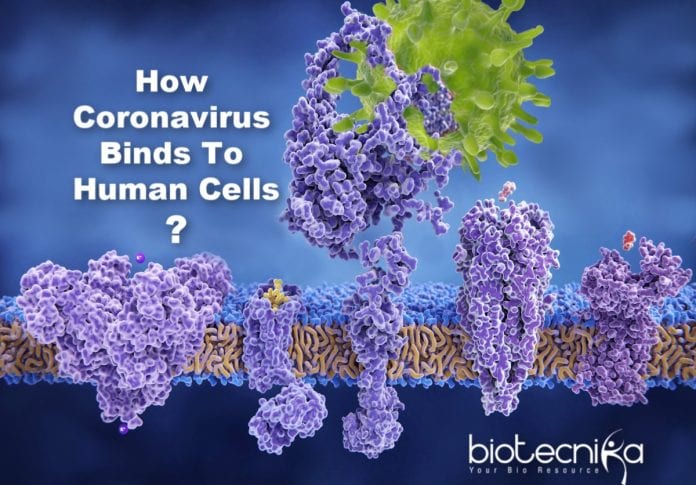To infect humans, coronavirus binds to receptor proteins on the surface of human cells. Professor Fang Li and his team of researchers from the Department of Veterinary and Biomedical Sciences at the College of Veterinary Medicine, University of Minnesota recently carried out a study to understand how the novel coronavirus SARS-CoV-2 binds to human cell receptors. The new study published in the journal Nature sheds light on the understanding of infectivity of the coronavirus, it’s animal origin and provides clues on antiviral drugs and vaccines.
The study using several technologies provides some important information on how the virus binds to the receptor. Li used x-ray crystallography for the first time to map out the structure of a novel coronavirus protein that binds to the human receptor. A lot of information on how the viral protein and receptor protein connect is revealed through this 3D imagery.
The 3D structure reveals that:
- The new coronavirus SARS-CoV-2 has evolved new strategies to bind to the human receptor compared to the 2003 SARS virus, facilitating tighter binding to the receptor.
- Two related coronaviruses found in pangolins and bats can bind to the same receptor as SARS-CoV-2, suggesting that the new virus might have originated from bats directly or through intermediate hosts like pangolins. But these viruses found in pangolins and bats need to undergo mutations to effectively bind to the human receptor.
The researchers identified potential key mutations that would have enabled the virus to effectively bind to the human receptor. The study also provides a blueprint for developing new antibody drugs by mapping crucial binding sites on the novel coronavirus for the antibody drugs to act on.
If a new antibody can bind to the viral proteins more effectively and frequently than the human receptor, the drug can block the virus from finding to the human cells, making it a potentially effective treatment against COVID-19.
As the same binding sites can stimulate immune response and antibody production in the human body, they are valuable for designing vaccines that can prevent future infections.
The scientific team is planning to focus on developing vaccines and antibody drugs that would target the binding sites SARS-CoV-2.
Gang Ye, Jian Shang, Chuming Luo, Yushun Wan, Ashley Auerbach, and Qibin Geng from the Department of Veterinary and Biomedical Sciences, and, Hideki Aihara, Ke Shi from the College of Biological Sciences and the Medical School also contributed to the study.






























